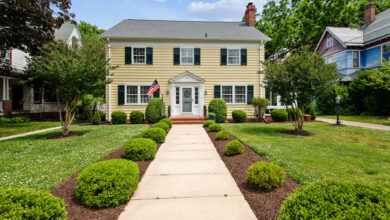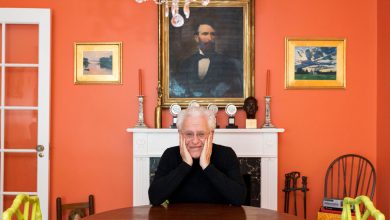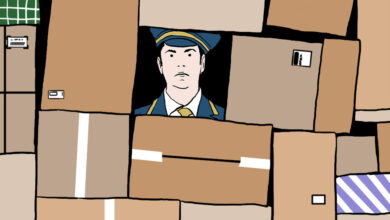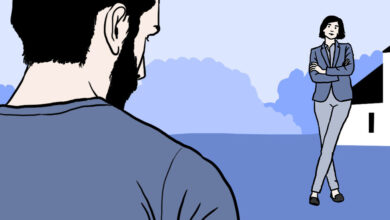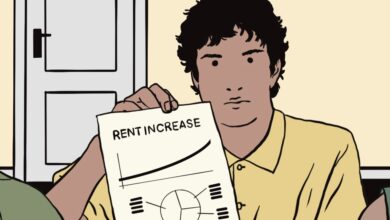Kingston, N.Y.: A Historic Hudson City ‘Preparing for Better Opportunities’
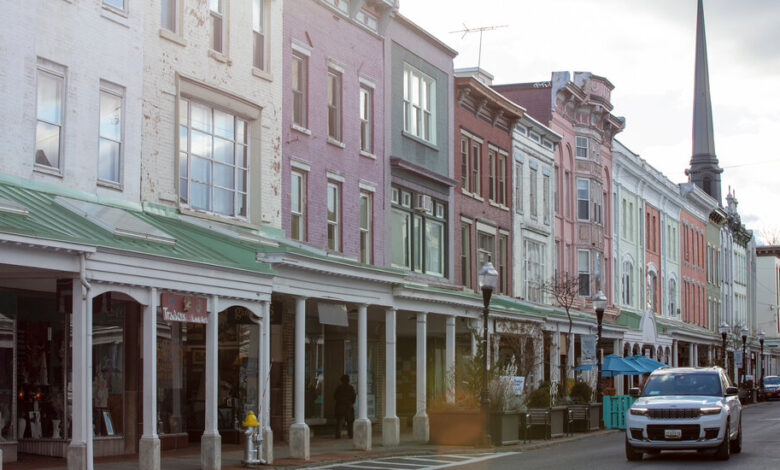
Kingston, N.Y., was hardly a place to hang out in the 1990s, when Malia Du Mont arrived in the area to attend Bard College, about 10 miles up the Hudson River. Once a bustling 19th-century river port, Kingston had become, well, dull over the decades. The riverboat that provided tours, in fact, was called the Rip Van Winkle, after the fictional character who falls asleep in the Catskills for 20 years.
Ms. Du Mont, 48, is now an administrator at Bard, and some things are more important to her than they were 25 years ago: river views, woods bustling with wildlife, plenty to do outside. And Kingston is not the same town it was then. Today it is thriving, and close-knit. Perhaps symbolically, the Rip Van Winkle was replaced in 2019 with the newer and roomier Rip Van Winkle II.
“There’s more of a sense of neighborhood and community than anywhere I’ve lived,” Ms. Du Mont said of the Ulster County city of about 23,000 residents. Three years ago, she bought a three-story brick house in the Rondout National Historic District for $398,000. “It’s like I’m in the city and forest at the same time,” she said.
The secret seems to be out about Kingston, which sits on the Hudson’s western bank, just off the New York State Thruway, about 100 miles north of Manhattan. That’s due partly to the pandemic, which has spurred more New Yorkers to ditch the city for upstate outposts. But they’d already been coming for years, said Margaret Thorne, an agent for the Keller Williams realty office in town.
Nearly every interested buyer who contacts her is from New York City, creating a market where houses sell quickly. “There are more buyers than homes available, and most properties are receiving multiple offers above asking price,” Ms. Thorne said.
With a thriving arts community drawing in new shops and restaurants, Kingston is certainly hipper than it used to be. But its riverfront perch, mountain landscape and rich history that predates the United States (with plenty of surviving architecture) make Kingston more than Williamsburg North.
Dan Faronson and his fiancée, Erin Nylen, paid $450,000 this year (about $70,000 above the asking price) for a four-bedroom house in neighboring Hurley, N.Y. They moved from the Kensington neighborhood of Brooklyn, and these days they run into a lot of ex-Brooklynites.
Ms. Nylen, 37, got a new job at Scenic Hudson, an environmental-protection group, and Mr. Faronson, 34, was able to continue his job as a data engineer. “We can still kind of live the life we were living,” he said, adding that Kingston has “more of a big-city vibe despite being nestled in the Hudson Valley.”
The community calendar is stuffed with activities like Childrens’ Day in October (“a tiny taste of terror”) and the Snowflake Festival in December. The first OMG Art Faire, featuring the work of contemporary artists, was held this fall at the 100-year-old Wall Street Music Hall, in the Stockade area of the city.
“It just seems like a city that’s preparing for better and better opportunities,” said Janet Hicks, the owner of One Mile Gallery and the art fair’s sponsor.
Ms. Hicks and her former partner paid $300,000 in 2009 for the three-story brick 1789 building on a half-acre of land, figuring they could live in part of it and use the rest as a studio and art gallery. She’s still there. Through the years, there have been surges in the Kingston real estate market, not to mention more businesses and fresh coats of paint. But these days, she said, the upturn “feels more substantial and real.”
What You’ll Find
Kingston has three distinct districts: Uptown, which includes the historic Stockade area; Midtown, which is bisected by Broadway, the city’s main drag; and Rondout, near the creek and river, to the south.
The Stockade, which covers about eight blocks, is neat and strollable, with an abundance of preserved Dutch and Colonial architecture. Wall Street and North Front Street offer shops and eateries behind covered sidewalks. The Hotel Kinsley occupies four distinct 19th-century buildings, including a restored bank building.
Two-story wood-frame houses, with porches that jut out to the sidewalk, proliferate in the residential blocks of Midtown. Broadway looks like any Main Street U.S.A., with Kingston High School, the majestic brick Kingston City Hall and the restored Ulster Performing Arts Center within blocks. Light poles are decorated with photos of local war veterans, known as “hometown heroes.”
Rondout, next to the creek of the same name, is home to the highly acclaimed Hudson River Maritime Museum, Rip Van Winkle II excursions and the charming T.R. Gallo Park. If it sounds like banjo music is being piped over a loudspeaker, look closer: It’s probably a real banjo player.
Near the Wurts Street suspension bridge is a loop called Presidents Place. “There are old beautiful houses that were built as the elegant homes of the shipyard presidents, steamboat company presidents and brickyard presidents,” said Ms. Du Mont, who lives nearby. “Even the weather vane on a church is a Hudson River steamboat.”
What You’ll Pay
According to data provided by the Ulster County Board of Realtors, there were 32 active residential listings on Nov. 23 in Kingston, and another 16 in Hurley. Their prices ranged from $89,900 to $799,000 in Kingston, and $129,000 to $2.185 million in Hurley.
The data showed that 225 residences were sold from Jan. 1 to Nov. 23 in Kingston, for an average of $279,900. During the same period in 2020, 190 residences sold for an average of $225,000. Another 75 residences in Hurley were sold from Jan. 1 to Nov. 23, at an average of $369,900, compared with 86 residences at an average of $322,500 during the same period in 2020.
Homes are also selling much faster, with a median time of 24 days on the market in Kingston, compared with 50 during the same period in 2020. In Hurley, the median is 29 days on the market, compared with 40 last year.
“The market remains strong,” Ms. Thorne said. “During the pandemic, properties were selling.”
A two-story 1900 Victorian listed at $599,000 in the Rondout Historic District comes with an annual property tax bill of $6,427, according to the OneKey Multiple Listing Service.
The Vibe
Sean Nutley, who grew up in Kingston and now co-owns Bluecashew, a curated kitchen store on North Front Street, joked that he could remember tumbleweeds rolling down the streets. Even when he opened his store four years ago, he said, Kingston was thought of as a good spot for Canadians to stop on their way to the Jersey Shore.
“I’ve seen quite a dramatic turnaround,” Mr. Nutley, 56, said of the wave of new residents he has seen arrive in recent years. “When you’re looking for a house, driving on a freeway for two hours from New York, you don’t want to drive anymore.”
Ms. Nylen, who bought the house in Hurley this year with her fiancé, enjoys hiking, going to concerts, visiting local breweries and farmers markets, and volunteering with the Ulster County SPCA. “Spotting all of the different birds in the forest around our house is a favorite activity,” she said.
Residents believe the city benefits from its diversity: African Americans and Latinos make up 30 percent of the population, according to census data. WKNY, Radio Kingston, includes shows such as El Mañanero, Hip Hop 101 and back-to-back Irish and polka shows.
Kingston might be called an “artsy” city, but some residents say that label doesn’t do it justice. Real people work and live here. It’s a place to plant roots. “It’s nice people, it’s creative, it’s a very special place,” Mr. Nutley said. “We are seeing so many young and cool people just starting their lives up here.”
Ms. Du Mont, the administrator at Bard, pointed to the success of Kingston’s annual O+ Festival, started in 2010, which assembles the arts and wellness communities. Underinsured artists and musicians perform in exchange for services provided by doctors, dentists and health providers. “I’m so proud to be a part of this community, which, like everywhere, has its flaws,” she said. “But the community focus, such that even the arts here are centered on engagement and accessibility, is a great and unusual thing.”
The Schools
The Kingston City School District has about 6,300 students enrolled in 10 public schools — seven elementary schools, two middle schools and one high school.
According to the State Department of Education, the enrollment in 2019-20 was 51 percent white, 25 percent Latino, 12 percent Black, 9 percent multiracial, and 2 percent Asian, Native Hawaiian or other Pacific Islander. More than half the students were considered economically disadvantaged.
Kingston High School had 1,950 students in 2019-20, with a four-year graduation rate of 89 percent. According to the State Department of Education, SAT scores at the school in 2018 were 553 for evidence-based reading and 555 for writing, compared with statewide averages of 534 in both.
The Commute
Kingston is just off Exit 19 on the New York State Thruway, Interstate 87, which shoots through the Hudson Valley to the Major Deegan Expressway and the Robert F. Kennedy (Triborough) Bridge. A one-way journey to or from New York will take at least two hours — on a good day.
Many Kingston residents prefer driving 20 to 30 minutes to Poughkeepsie, which offers Metro North train service to Grand Central Terminal in Manhattan. There are nine inbound trains between 5 a.m. and 8 a.m. and seven outbound trains between 5 p.m. and 8 p.m. on weekdays, and a 10-trip peak ticket is $163.75. Monthly parking at the Poughkeepsie station is $47.
There are 10 weekday buses to New York from the Trailways Terminal on Washington Avenue in Kingston. The one-way fare for the two-hour, 10-minute ride is $26.50.
The History
With European settlers and the Esopus tribe at the brink of war in 1658, Peter Stuyvesant, the director-general of the colony of New Netherland, ordered settlers to build a new village above the Hudson River. Despite (or maybe because of) their differences, the Esopus gave the land on the bluff to the settlers, in honor of Stuyvesant. The settlers disassembled their barns and houses and carted everything uphill, rebuilding the village and surrounding it with a 14-foot-high wall of tree trunks. This is still referred to as the Stockade area, a National Historic District.
In the summer of 1777, with the British occupying New York City, Kingston became the first capital of New York State. A few months later, the British arrived and burned it down.
For weekly email updates on residential real estate news, sign up here. Follow us on Twitter: @nytrealestate.


